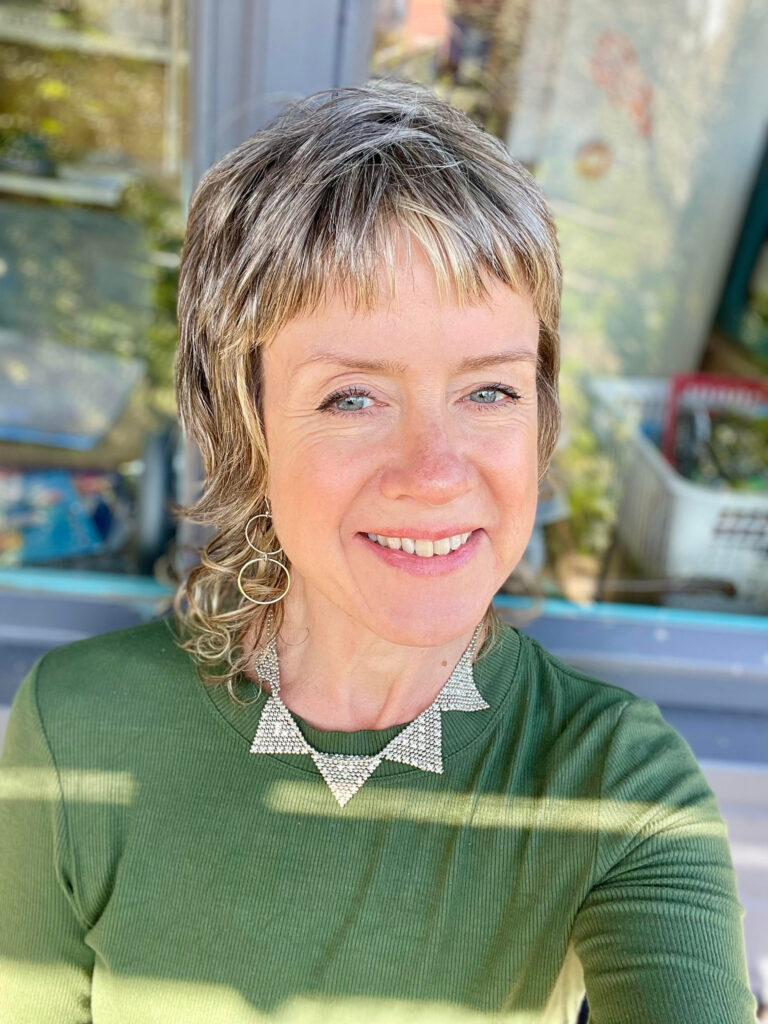I remember a moment in my Compassionate Inquiry mentorship training that I’ll never forget.
Our group mentor looked at me softly and asked,
“Nancy, do you ever celebrate yourself?”
The question landed deep in my body before my mind had time to react. My eyes dropped and filled with tears. My shoulders folded in. I squirmed in my chair and turned my head away. There was even an “ughhh” sound that wanted to come out — the sound of wanting to disappear.
In that instant, I was flooded with something I couldn’t name at first — a deep wave of shame. Not the kind that says I did something wrong, but the kind that whispers there’s something wrong with me.
It was uncomfortable, confronting — and, as I later came to understand, a doorway into healing.
The Hidden Roots of Shame
Dr. Gabor Maté, whose work informs the Compassionate Inquiry approach, teaches that shame isn’t a character flaw or moral failing. It’s a learned survival response — an adaptation the body makes in order to stay safe and loved.
Every child has two essential needs:
- Attachment — to feel loved, accepted, and connected.
- Authenticity — to be true to themselves, to express their real feelings and needs.
When those two needs come into conflict — when expressing our authentic self threatens our attachment — we learn to suppress authenticity to preserve connection. The message that takes root is: It’s not safe to be me.
That message doesn’t just stay in the mind. It settles into the body — into the nervous system, the immune system, even the cells. Shame becomes not just an emotion, but a physiology.

The Body Remembers
Looking back, I can see how my own body carried that unspoken story.
As a child, I had eczema and allergies — my skin and immune system both overreacting to the world around me. As a teenager, I developed glandular fever, which left me exhausted and vulnerable. Even now, I live with an overactive immune system that often shows up as IBS, eczema flare-ups, and food intolerances.
For years I saw these as isolated health problems. But through studying Gabor Maté’s work, I began to understand them differently — as my body’s way of expressing what my mind had learned to suppress.
Maté writes in When the Body Says No that “when we repress emotion, we repress the immune system.” The same system that’s designed to defend us also bears the burden of our emotional defenses. My body, in its own language, was saying: I’ve been holding too much for too long.
When Shame Shows Up in the Body
That day in mentorship, when my mentor asked about celebrating myself, I felt my whole system contract. My body remembered — the heat in my face, the tightness in my throat, the downward pull of my gaze. It wasn’t just embarrassment; it was my nervous system activating a deeply wired pattern: Hide. Withdraw. Don’t be seen.
Physiologically, shame is a protective collapse — the body’s way of keeping us safe when visibility once felt dangerous. The freeze, the smallness, the turning inward — they are all intelligent responses the body learned long ago.
The irony, of course, is that these same patterns that once kept us safe can, over time, contribute to chronic stress and inflammation. The body keeps doing its job, but it never gets to rest.
The Slow Work of Healing
Through Compassionate Inquiry, I began to meet that shame — and my body — with curiosity rather than judgment. Instead of pushing the sensations away, I started to notice them: the constriction in my chest, the tightening grip around my throat, the heat rising in my skin. The strong desire to hide and keep myself small.
When I could stay present with those sensations — not to fix them, but to listen — something softened. Beneath the shame was a younger part of me who had learned that self-celebration, confidence, or visibility might lead to rejection. That part of me didn’t need to be shamed again — she needed compassion.
Slowly, I began to see that healing isn’t about eliminating symptoms; it’s about creating safety inside the body so it no longer has to shout. The more I honor my authenticity, the calmer my body becomes and the more I’m able to show up in the world and allow my authentic self to be seen.
Some days my eczema still flares, or my gut protests. But now I can meet those reactions not as enemies, but as messengers — gentle reminders of how deeply the body remembers, and how much it longs to be free.
In The End
Shame is not evidence that we’re broken; it’s proof that we once adapted brilliantly to survive. My body’s sensitivities, my immune system’s intensity — they’re all part of the same story: a story of protection, resilience, and now, healing.
That moment in mentorship — when I couldn’t celebrate myself — taught me something profound. The work isn’t about forcing celebration; it’s about learning to stay with ourselves when celebration feels impossible.
And maybe that, in itself, is the first act of self-celebration.

About The Author
Nancy Evans is a trauma-informed coach and certified Compassionate Inquiry® practitioner based in West Sussex, UK. Trained under Dr Gabor Maté, she supports individuals who are ready to deepen self-understanding, release old emotional patterns, and reconnect with their authentic selves.
Nancy’s work is shaped by her own lived experience of anxiety, ADHD, and addiction recovery, which informs her compassionate, grounded approach to healing. She offers one-to-one coaching, meditation, and embodied inquiry sessions to help people cultivate self-awareness and inner safety.
Learn more about Nancy’s work at nancyevanscoaching.co.uk.